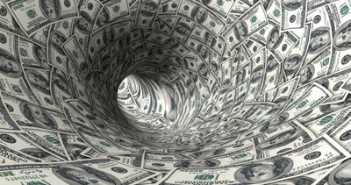Ben Bernanke finally announced QE3. Given the new style of the program, an open ended one, some call it QE-infinity. The Fed will create money to buy Mortgage Based Securities for as long as needed.
While it is hard to make the connection between unemployment and dollar printing, the markets expected this move. The result was some kind of “sell the fact” effect afterwards. Where is the dollar headed now, as elections approach?
The Fed has another rate meeting towards the end of October, but no press conference is planned. After the big announcement in September, Bernanke isn’t likely to announce anything new, especially as the elections are right behind the corner.
Markets will be looking for hints towards decisions at the end of the year, when the current phase of Operation Twist ends, and when the intense discussions regarding the fiscal cliff reach “money time”. The fiscal cliff negotiations will happen only after the elections, but the Fed might still hint if it plans to extend its easing programs or not.
This depends on data that will be released during October, and especially the Non-Farm Payrolls. Figures published in September were somewhat mixed:
- Jobless claims slid back: After reaching higher ground, claims slid to around 370K.
- Trade balance deficit falls: the recent reports of $41.9 billion and $42 billion are the lowest since 2010. While it doesn’t bode well for global growth, it is better for the greenback.
- Retail Sales rose again: the rise of 0.9% in sales and 0.8% in core sales exceeded expectations. This goes hand in hand with a rising consumer confidence: 78.3 points according to the University of Michigan and 70.3 according to CB.
- On the negative side, we have a plunge of 13.2% in durable goods orders and a downwards revision of Q2 growth to only 1.3% (annualized).
- Purchasing managers indicators improved, with manufacturing returning to growth territory and services rising (despite a slide in the employment component).
What does the Fed care about?
In the press conference, Bernanke provided two interesting notes to look forward to:
- The unemployment rate doesn’t matter: It might matter for politics, but the Fed is looking at the bigger picture, and specifically at the participation rate. If the unemployment rate falls with the participation rate, this is not the desired outcome – the Fed wants more workers – more economic activity.
- Wealth effect: QE1 was intended to lower long term interest rates. QE2 was triggered by the fear of deflation. QE3 (or infinity) aspires to create a wealth effect: higher stock prices and higher home prices are supposed to make Americans more confident, and cause them to spend, thus stirring the economy. The saying that “Bernanke works for the stock market” looks more real after this statement. So, it is important to follow stocks and consumer spending.
This article is part of the October monthly forex outlook. You can download the full report, including the currency technical outlooks and the relative strength index by joining the newsletter in the form below.
